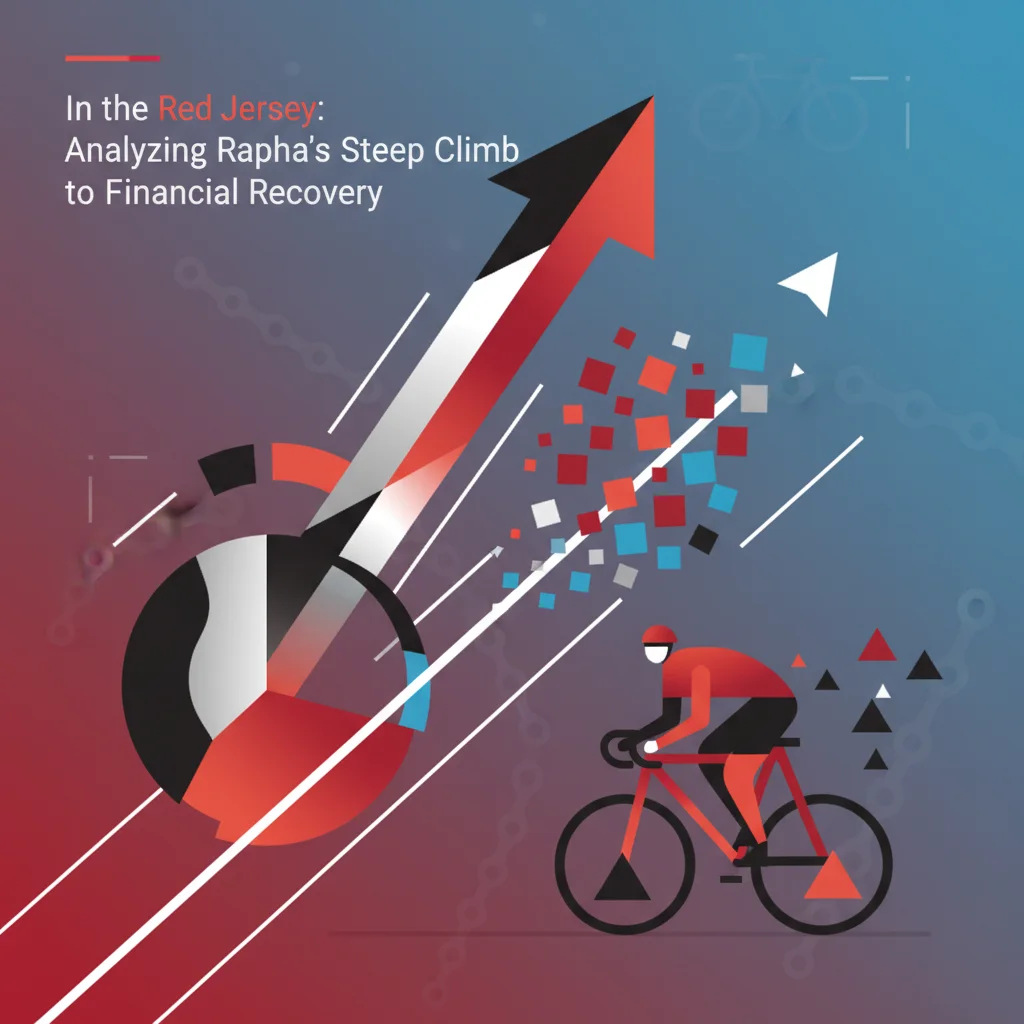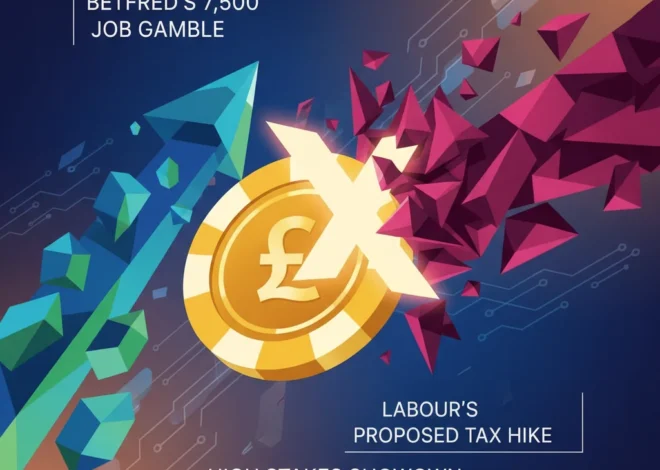
In the Red Jersey: Analyzing Rapha’s Steep Climb to Financial Recovery
In the world of cycling, Rapha is more than just a brand; it’s a statement. Known for its minimalist aesthetic, premium quality, and a price tag to match, it has cultivated a global tribe of devoted followers. For years, the brand seemed to be on a breakaway, drafting behind a powerful direct-to-consumer model and a booming cycling culture. But as any cyclist knows, every climb is eventually followed by a descent, and for Rapha, the financial gradient has become punishingly steep. Despite being owned by RZC Investments, the investment firm of Walmart heirs Steuart and Tom Walton, the high-end British cycling brand has plunged deeper into the red, signaling a long and arduous climb back to profitability.
The latest financial filings paint a stark picture of a company grappling with significant headwinds. This situation presents a fascinating case study for those interested in corporate finance, private equity turnarounds, and the complex dynamics of the modern consumer retail market. We’ll dissect the numbers, explore the strategic missteps, and analyze the new leadership’s playbook for navigating this treacherous terrain. For investors and business leaders, Rapha’s journey offers critical lessons on brand management, the perils of post-pandemic market normalization, and the relentless pressure of the global economy.
The Pandemic Boom and the Inevitable Bust
To understand Rapha’s current predicament, we must rewind to the global lockdowns of 2020. As gyms closed and team sports were paused, millions turned to cycling for exercise and escape. This triggered an unprecedented boom for the entire industry. Brands like Rapha, with their strong online presence and aspirational marketing, were perfectly positioned to capitalize. Sales soared as newcomers and seasoned cyclists alike invested in high-end gear. However, this surge was a double-edged sword. It masked underlying operational challenges and led to strategic decisions based on an unsustainable level of demand.
When the world reopened, the market corrected itself. The cycling boom deflated, leaving many companies with bloated inventories and supply chains configured for peak demand. Rapha was no exception. The company’s financial performance reveals a classic story of revenue growth failing to translate into profitability amidst escalating costs and normalizing demand.
A Look at the Financials: Pedaling Hard but Going Backward
The numbers, as reported by the Financial Times, are sobering. For the year ending January 29, 2023, Rapha’s parent company, Carpegna Ltd, saw its pre-tax losses widen significantly. Understanding these figures is crucial for anyone involved in investing or corporate analysis.
Here is a summary of the company’s recent financial performance:
| Financial Metric | Fiscal Year 2023 | Fiscal Year 2022 | Change |
|---|---|---|---|
| Revenue | £131 million | £118 million | +11% |
| Pre-Tax Loss | £12 million (source) | £10.5 million | +14% |
| Net Debt | £43.7 million | £29.9 million | +46% |
While a revenue increase of 11% to £131mn might seem positive, the simultaneous deepening of pre-tax losses to £12mn is a major red flag. This divergence indicates severe pressure on profit margins. The company attributed the losses to factors including clearing excess stock at a discount, inflationary pressures on costs, and restructuring expenses. This is a common tale in the retail sector today, where managing the delicate balance between revenue, inventory, and profitability has become a high-wire act influenced by macroeconomic economics.
Dubai's Shimmer vs. London's Substance: Why Buying the Dip on the UK is the Ultimate Power Play
The Turnaround Playbook: A New Route to Profitability
In response to the mounting losses, RZC Investments has initiated a classic private equity turnaround strategy, starting with a leadership overhaul. Francois Convercey, a former LVMH executive, and Daniel Blum have been appointed as the new chief executive and executive chair, respectively. Their mission is clear: stabilize the business and chart a sustainable course back to profit.
Their multi-pronged strategy includes:
- Market Rationalization: The company plans to pull back from “non-strategic, unprofitable markets” to concentrate its efforts and resources on core regions like the UK, US, Germany, and South Korea. This is a crucial step to stop bleeding cash and focus on areas with the highest potential for profitable growth.
- Product Simplification: Rapha intends to streamline its product range. Over-diversification can lead to operational complexity, inventory challenges, and a diluted brand message. A more focused collection will likely improve forecasting, reduce manufacturing costs, and clarify the value proposition for consumers.
- Operational Efficiency and Cost Control: This is the cornerstone of any turnaround. The new leadership will be scrutinizing every aspect of the business, from supply chain logistics to marketing spend and headcount. The goal is to build a leaner, more agile organization that can better withstand market volatility. This is where modern fintech and analytics platforms can play a pivotal role in optimizing cash flow and operational spending.
- Brand Reinforcement: While cutting costs, the leadership must simultaneously protect and enhance the brand’s premium positioning. This involves continuing to invest in their global “Clubhouse” community hubs and sponsoring elite cycling teams, which are vital components of their marketing engine.
This playbook is logical, but execution is everything. The challenge lies in making deep operational cuts without alienating the loyal customer base that has been the bedrock of Rapha’s success.
The Paradox Principle: Why Success in the Modern Economy Belongs to Those Who Embrace the Grey
Broader Industry Context: A Puncture for the Whole Market
Rapha’s struggles are not happening in a vacuum. The entire cycling and direct-to-consumer (DTC) sector is facing a brutal correction. WiggleCRC, a major online cycling retailer, recently fell into administration, sending shockwaves through the industry. Publicly traded companies in adjacent sectors, like Peloton and Allbirds, have seen their valuations on the stock market collapse as the froth of the pandemic boom evaporated and investors refocused on profitability over growth-at-all-costs.
The current high-interest-rate environment, managed by central banking institutions to curb inflation, has also made things more difficult. It increases the cost of borrowing for companies like Rapha, which has seen its net debt rise, and puts a damper on consumer discretionary spending. In this economic climate, a £200 cycling jersey becomes a luxury that many are willing to forgo.
The Road Ahead: A Test of Endurance
Rapha is at a critical juncture. The brand’s cultural capital and loyal following are immense assets that cannot be understated. However, brand love doesn’t pay the bills. The new leadership, backed by the deep pockets of the Walton family, has a clear mandate to restore financial health to the company.
The journey ahead will be a grueling test of endurance, much like a multi-stage grand tour. Success will require a perfect blend of financial discipline, operational excellence, and a nuanced understanding of the brand’s unique identity. For those in the world of finance and investing, Rapha’s turnaround attempt will be a compelling story to watch. It serves as a powerful reminder that even the most celebrated brands are not immune to fundamental economic forces and that the climb to sustainable profitability is often the hardest ride of all.
The Great Thaw: Why Europe's IPO Market is Roaring Back to Life in 2024


